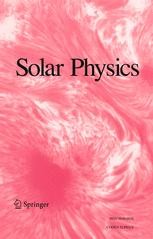Editors' Choice: "Magnetic Flux Emergence in a Coronal Hole"
 Palacios, J., Utz, D., Hofmeister, S. et al. Magnetic Flux Emergence in a Coronal Hole. Sol Phys 295, 64 (2020). https://doi.org/10.1007/s11207-020-01629-9
Palacios, J., Utz, D., Hofmeister, S. et al. Magnetic Flux Emergence in a Coronal Hole. Sol Phys 295, 64 (2020). https://doi.org/10.1007/s11207-020-01629-9
Editor's Choice (Research Article)
Published: 19 May 2020
Topical Collection: Towards Future Research on Space Weather Drivers
Abstract:
A joint campaign of various space-borne and ground-based observatories, comprising the Japanese Hinode mission (Hinode Observing Plan 338, 20 – 30 September 2017), the GREGOR solar telescope, and the Vacuum Tower Telescope (VTT), investigated numerous targets such as pores, sunspots, and coronal holes. In this study, we focus on the coronal hole region target. On 24 September 2017, a very extended non-polar coronal hole developed patches of flux emergence, which contributed to the decrease of the overall area of the coronal hole. These flux emergence patches erode the coronal hole and transform the area into a more quiet-Sun-like area, whereby bipolar magnetic structures play an important role. Conversely, flux cancellation leads to the reduction of opposite-polarity magnetic fields and to an increase in the area of the coronal hole.
Other global coronal hole characteristics, including the evolution of the associated magnetic flux and the aforementioned area evolution in the EUV, are studied using data of the Helioseismic and Magnetic Imager (HMI) and Atmospheric Imaging Assembly (AIA) onboard the Solar Dynamics Observatory (SDO). The interplanetary medium parameters of the solar wind display values compatible with the presence of the coronal hole. Furthermore, a particular transient is found in those parameters.
Solar Physics Editor's Choice:
In each volume of Solar Physics, a few articles are marked as “Editors’ Choice”. The primary criteria is original, high quality research that is of wide interest within the community.
